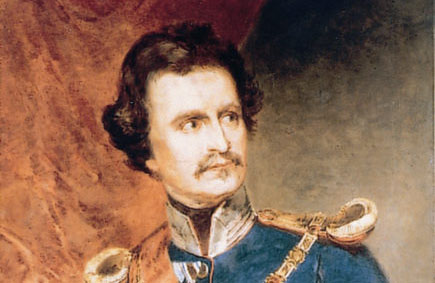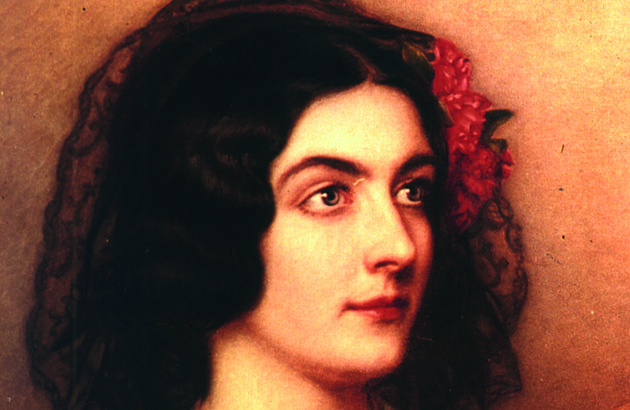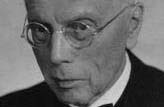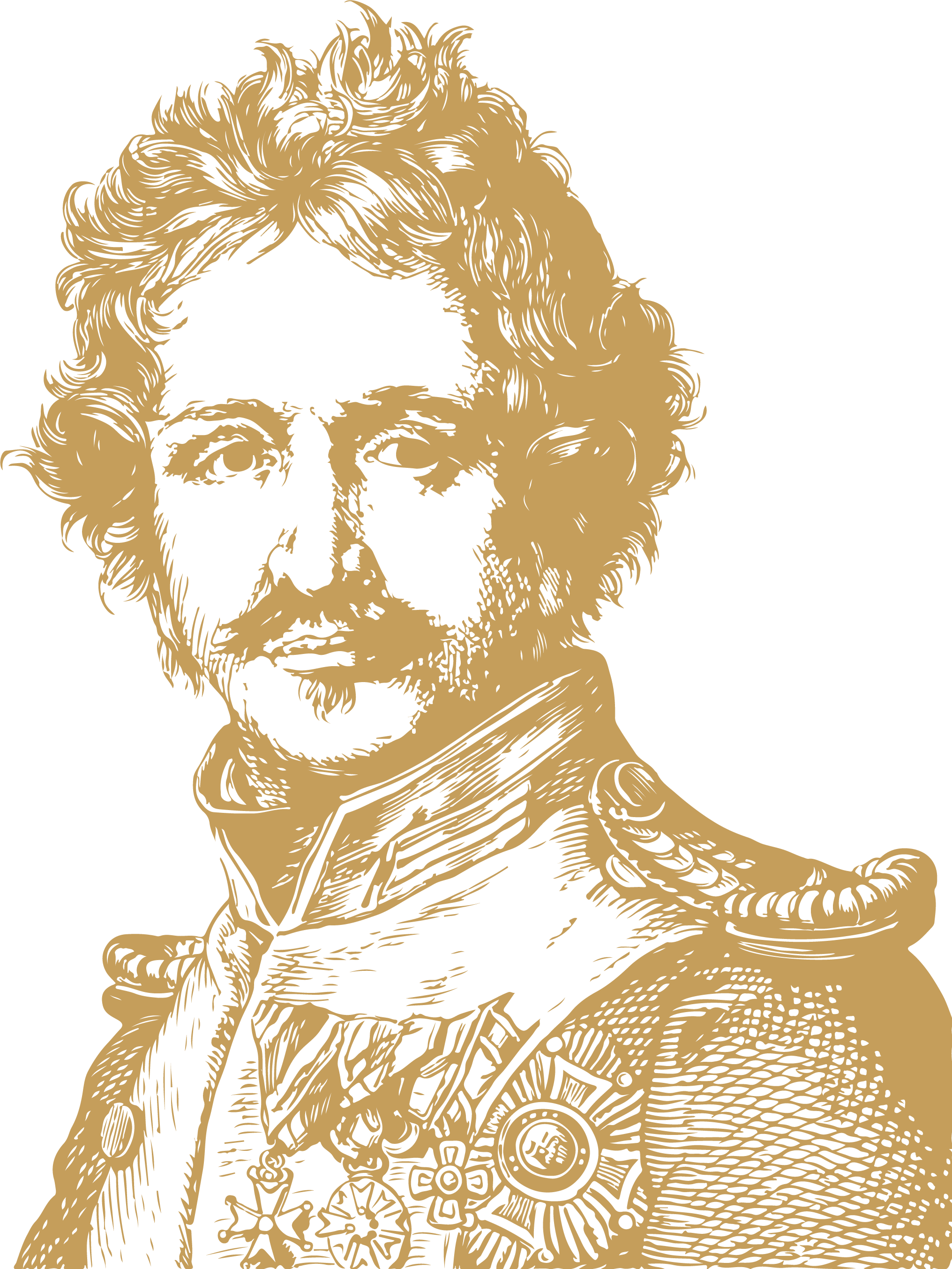Our healing water has attracted celebrities from all over the world for centuries. King Ludwig I, Empress Elisabeth of Austria and Tsarina Katharina all tasted the tasty water, which is also called champagne because of its natural carbonic acid content.
Famous Guests

King Ludwig I 1786-1868
Romantic politician. Crown Prince Ludwig was born on August 25, 1786 in Strasbourg. His parents are Maximilian I Joseph King of Bavaria and Auguste Wilhelmine of Hesse-Darmstadt. In 1810, Ludwig married Therese of Saxe-Hildburghausen. Ludwig spent his crown prince years from 1816-1825 in Aschaffenburg and Würzburg before he was named King Ludwig I of Bavaria in the month of his father’s death. Just one day after taking his royal oath, King Ludwig I ordered that the name “Bavaria” should be written with a y in the future.
In 1818, while still crown prince, he visited Bad Brückenau for the first time. Inspired by the peace and quiet, the untouched nature in contrast to the turbulent Munich Residence, 25 further stays followed, which had a decisive influence on Bad Brückenau. He completed the baroque complex of the Staatsbad, had the springs refilled and, from today’s perspective, was an early ecologist who was concerned with the special protection of nature in the Sinntal. It is thanks to his commitment in the areas of educational policy, culture and churches that 75 new monasteries were founded between 1826 and 1848, as well as the establishment of universities and central schools. In 1835, on Ludwig’s initiative, the new coat of arms for Bavaria was adopted, symbolizing all the tribes in Bavaria (Old and Lower Bavaria, Palatinate, Franconia, Swabia). In 1846, the 25-year-old dancer Elizabeth Gilbert alias Lola Montez arrived in Munich, met the king and became the 60-year-old’s mistress. In 1847, Lola Montez and Ludwig, who had now been ennobled as Countess Landsfeld, spent a stay together in the anonymity of Bad Brückenau. Numerous poems about her and letters to Lola Montez today demonstrate the king’s deep affection. In 1848, armed students and civil unrest throughout Bavaria led to the king’s abdication. His eldest son Maximilian II becomes his successor. Queen Therese died in 1854, King Ludwig died on February 29, 1868 in Nice.

King Ludwig I’s mistress Elizabeth Rosanna Gilbert (Lola Montez) was born on February 17, 1821 in the Irish village of Grange near Sligo. Her parents are the English officer Edward Gilbert and Eliza Oliver, who comes from Irish rural nobility. In 1823 Edward Gilbert and his young family were transferred to Calcutta in the British colonial empire. Elizabeth grew up in India, England and Scotland. In 1837 she married the officer Thomas James. The marriage ends in divorce and Elizabeth Gilbert returns to England.
Elizabeth Gilbert becomes Lola Montez. In June 1843 she appeared in London for the first time as a solo dancer from Seville. The change of identity is seen through by the audience. The dancer leaves England and moves across the continent. She makes guest appearances in St. Petersburg, Warsaw, Berlin, Dresden and Paris. After her performances, which are always accompanied by scandals and affairs, she is usually expelled from the cities. A sensational trial occurs in France after her lover is shot in a duel.
Her stay in Bad Brückenau in 1847 was the highlight of her biography. Ludwig I, King of Bavaria, names his lover Lola Montez Countess of Landsfeld. It became the catalytic trigger of the 1948 revolution in Munich. In February 1851 Lola Montez reached New York. She died on January 17, 1861, shortly before her 40th birthday in New York and is buried in the cemetery in Brooklyn.

A special physicist. Melchior Adam Weikard was appointed physicist for the Brückenau office in 1764 and thus became a spa doctor at the Staatsbad. Born in Römershag, a district of Bad Brückenau, as the son of a local innkeeper, the house where he was born is still preserved as an inn today.
Weikard wrote several fountains and invitations “to the cure in Bad Brückenau”. He made the young spa town famous far beyond German borders. In 1784 he was appointed court physician to the Russian Tsarina Catherine II at the tsar’s court in St. Petersburg. Weikard returned to Bad Brückenau and died there in July 1803.

The urologist who made Bad Brückenau world famous. The appointment of Dr. Felix Schlagintweit, an internationally recognized authority in the field of urology, becoming a spa doctor was a stroke of luck for Bad Brückenau. His specialist books and specialist magazines, which were read and followed all over the world, helped Bad Brückenau gain worldwide fame as a spa for kidney and bladder diseases. While Schlagintweit practiced in Bad Brückenau, kings and emperors visited the place. One of his most famous patients was Empress Elisabeth of Austria, who spent a four-week treatment in Bad Brückenau in 1898. Dr. Felix Schlagintweit died in 1950. Before her death in 1959, his widow bequeathed part of her assets to the Free State of Bavaria.

An outstanding doctor and courageous designer. The son of a citizen of Bad Brückenau had studied in Fulda and Heidelberg and with great commitment succeeded his great predecessor Melchior Adam Weikards as a spa doctor in Bad Brückenau. Zwierlein caused a great stir with his idea of introducing new women’s fashion specifically for the cure. As a bath doctor, he wanted simpler clothing than was the case at the time – a bath uniform.
For this purpose he called a women’s congress in Bad Brückenau in 1792. In fact, the bathroom uniform designed at the time was not verifiably produced. Today a replica model can be seen in the Bad Brückenau city museum.




